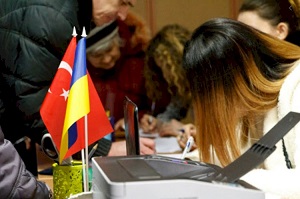Russia-Ukraine Peace Plan: A Path to Stability or a Compromise of Sovereignty?
A bold framework to resolve the Russia-Ukraine conflict, addressing territorial disputes, humanitarian aid, and global diplomacy.

Russia-Ukraine Peace Plan: A Path to Stability or a Compromise of Sovereignty?
Yusuf Inan / MedicenterTV.com / Turkey
A Bold Framework for Lasting Peace
The Russia-Ukraine war has inflicted immense human suffering and global instability. As the conflict drags on, a bold peace plan emerges with the potential to reshape geopolitics, restore stability, and rebuild economies. Will this framework bring an end to hostilities, or will it deepen existing divides? The following analysis explores the key components of the proposed peace plan and its implications for Russia, Ukraine, and the world.
Key Features of the Proposed Peace Plan
1. Immediate Ceasefire Under Global Oversight
An immediate and unconditional ceasefire forms the cornerstone of this plan. The United Nations (UN) or the Organization for Security and Co-operation in Europe (OSCE) would monitor the ceasefire to ensure compliance from both sides. This crucial step halts further bloodshed, guarantees safe humanitarian corridors, and lays the groundwork for lasting negotiations.
2. Resolving Territorial Disputes with Referendums
The plan addresses contentious territorial disputes, including the status of Crimea and the Donbas region, through independent, UN-supervised referendums. By allowing local populations to determine their political future, this approach balances sovereignty with self-determination while ensuring transparency and legitimacy.
3. Humanitarian Aid and Infrastructure Reconstruction
The devastation of war necessitates a massive reconstruction effort. Under this plan:
- International aid will flow to rebuild destroyed infrastructure and restore essential services.
- Both Russia and Ukraine will contribute financially, demonstrating mutual accountability.
- Special attention will be given to resettling displaced populations and providing psychological and economic support to affected communities.
4. Security Assurances and NATO-Russia Dialogue
Mutual respect for sovereignty and territorial integrity is a fundamental aspect of the plan. To address broader regional security concerns:
- NATO and Russia would establish a formal dialogue aimed at reducing tensions and fostering cooperation.
- This framework ensures long-term stability while preventing future escalations.
5. Economic Cooperation for Stability
Economic interdependence is critical to sustaining peace. The plan emphasizes rebuilding trade relations, particularly in the energy sector, and fostering regional agreements. These measures are designed to create shared economic benefits and reduce the likelihood of future conflicts.
Implications for Key Stakeholders
For Russia: A Strategic Crossroad
The peace plan offers Russia an opportunity to:
- Ease Sanctions: Reintegrate into global trade and revive its struggling economy.
- Stabilize Its Global Image: Demonstrate pragmatism and rebuild its reputation as a strategic global player.
However, compromises such as supporting referendums may be viewed domestically as a loss of influence over Ukraine, potentially weakening President Vladimir Putin's leadership narrative among nationalist factions.
For Ukraine: Balancing Sovereignty and Diplomacy
Ukraine’s sovereignty is the linchpin of this plan. While referendums carry risks of further territorial fragmentation, they also offer a transparent pathway to resolving disputes. For President Volodymyr Zelenskyy, the challenge lies in:
- Protecting Ukraine’s alliances with Western nations while pursuing diplomatic resolutions.
- Balancing the desire for peace with the preservation of national integrity.
For the Global Community: Energy, Food, and Diplomacy
Should this plan succeed, its effects would reverberate far beyond Eastern Europe:
- Energy Stability: Normalized relations could stabilize global energy markets, easing Europe’s energy crisis.
- Food Security: Renewed Ukrainian agricultural exports could mitigate food shortages in regions like Africa and Asia.
- Diplomatic Blueprint: This plan could serve as a model for resolving other protracted international conflicts.
Failure, however, risks escalating global tensions, widening economic divides, and emboldening other geopolitical disputes.
Conclusion: A New Era or a Missed Opportunity?
The Russia-Ukraine peace plan presents a rare chance to end hostilities and rebuild a foundation for global stability. While it demands significant compromises, the potential rewards—humanitarian relief, economic revival, and diplomatic breakthroughs—far outweigh the risks.
Leaders now face a historic decision: to act with courage and vision, or to allow the cycle of conflict and suffering to continue. Peace is not just the cessation of war—it is the opportunity to shape a better future for all.






































